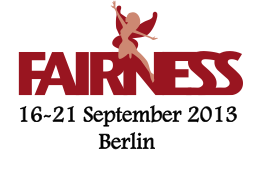Speaker
Mr
Szymon Harabasz
(Technische Universität Darmstadt (TUDA))
Description
The High Acceptance Di-Electron Spectrometer experiment, installed at GSI, Darmstadt, has measured rare penetrating probes and strange particles production in elementary nucleon-nucleon as well as in heavy ion collisions. In recent years, an upgrade of the data acquisition system was carried out and a major improvement of the spectrometer in terms of granularity and particle identification capability has been made by replacing the TOFino detector with the new Resistive Plate Chamber (RPC) time-of-flight wall. Thanks to this, the heaviest system, Au+Au at a beam kinetic energy of 1.23 GeV/u has been measured by HADES in April - May 2012.
In such collisions, extracting a pure sample of very rare di-electrons radiated from a dense fireball plays a crucial role. Therefore, a careful electron identification is necessary. This can be achieved by exploring not only information from the Ring Imaging Cherenkov detector but also from the time-of-flight measurement in combination with an evidence of an electromagnetic shower formation. Since a sequence of one- or two-dimensional cuts has been proven to be insufficient, lepton identification has to be done using a multi-dimensional condition calculated by an artificial neural network.
In this contribution I will present results on efficiency and purity of electron identification obtained using multi-variate analysis method.
Primary author
Mr
Szymon Harabasz
(Technische Universität Darmstadt (TUDA))

